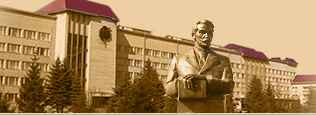SPATIO-TEMPORAL PECULIARITIES OF EXTERNAL INDEPENDENT EVALUATION IN THE DNEPROPETROVSK REGION.
External evaluation of educational achievements of graduates of educational institutions of the system of general secondary education and those who want to enter higher education institutions is carried out in more than 150 countries and is characterized by a variety of approaches. However, it is common for them that at the end of the general secondary education, the exam for certified graduation of high school graduates is usually external. This guarantees a high level of its objectivity, obtaining reliable data, educational achievements, the degree of their correspondence with regulatory requirements, social and personal expectations. In this study that is based on the statistical data that show the main indicators of external independent evaluation in the Dnepropetrovsk region, an analysis of the dynamics of the total number of participants in the testing, an analysis of the number of participants in selected subjects by districts and cities of the region has been held. The results of external independent evaluation for each subject and averaged indicators are separately analyzed. There were territorial differences in the number of participants in the testing for one educational institution. During the period under study, the most constant list of subjects for the passing of external independent evaluation was formed, with variations of a maximum of one subject. For all considered years, the Ukrainian language and literature remained compulsory for forming, and only in 2010 applicants could choose the history of Ukraine or mathematics, depending on the applicant’s preferences. The results of the territorial distribution of the indicators of the average indicator of the level of knowledge in all subjects showed a higher level of knowledge in the urbanized territories (in the regional center and cities of regional subordination). The highest value is typical for the regional center – the city of Dnepropetrovsk (now Dnepr), the average indicator of the students’ level of knowledge of each year under study exceeded 150 points. In all other cities of regional subordination, a value close to 150 points was observed. In rural areas, the average value of external assessment varies between 139 and 152 points. The highest rates are observed in Shirokovskiy, Pavlograd, Nikopol districts, which border on large cities. The lowest testing results were recorded in Yuryevsky, Sofievsky districts. This distribution of results can be explained by the fact that the level of knowledge in rural schools is much lower than in urban schools.
Keywords: external independent evaluation, educational institution, testing, number of participants in external independent evaluation.
References:
- Likarchuk I. L. Zovnishne nezalezhne otsinyuvannya – 2007 / I. L. Likarchuk // Osvita Ukrayini : 2007.- №10.- S. 109-111.
- Likarchuk, I. L. ZovnishnE nezalezhne otsinyuvannya navchalnih dosyagnen vipusknikiv zagalnoosvitnih navchalnih zakladiv. Informatsiyni materiali / I. L. Likarchuk (nauk. red.) ta in.. – Ukrayinskiy tsentr otsinyuvannya yakosti osviti. – K., 2007. – 288 s.
- Ofitsiyniy veb-sayt Ministerstvo osviti i nauki pro osvitu [Elektronniy resurs]. – Rezhim dostupu: http://mon.gov.ua/activity/education/
- Ofitsiyniy veb-sayt statistichnih danih Ukrayinskogo tsentru otsinyuvannya yakosti osviti Dnipropetrovskoyi oblasti [Elektronniy resurs]. – Rezhim dostupu: http://stat.testportal.gov.ua/
Full text:
